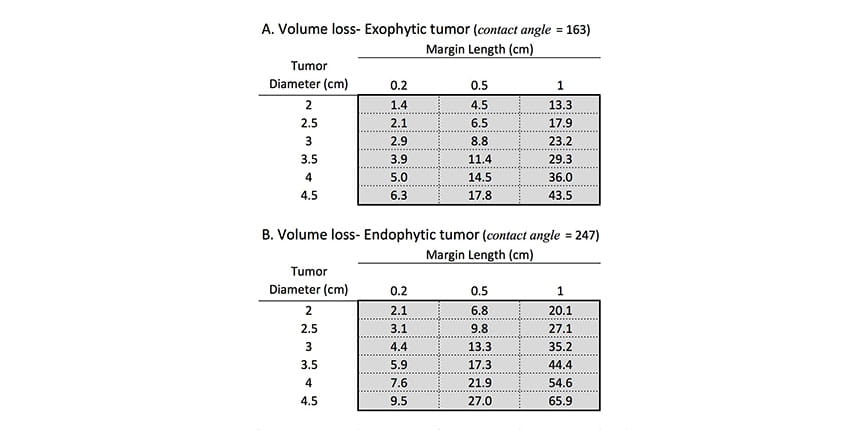Urologists at IU School of Medicine Department of Urology are researching new surgical techniques to treat kidney cancer that cause minimal damage to a patient’s kidney. With the increase in availability and use of robotic assistance, partial nephrectomy (PN) is used regularly to treat small renal masses. Researchers developed a way of predicting how much of the kidney would be removed by resection when performing a partial nephrectomy through a Single Slice Equation. Volume loss in the kidney can be caused by multiple surgical steps including: resection, ischemia (clamping the renal artery), and reconstruction (sutures to close the defect left after tumor removal).
Understanding renal volume loss during partial nephrectomy is important both for patients at risk of renal failure (solitary kidneys, chronic kidney disease, etc.) and for the research community as surgical techniques are evaluated. This study found the healthy margin resected during partial nephrectomy varies widely based on the tumor diameter, endophytic/exophytic, and resection margin length and can be accurately estimated from a single cross-sectional image of the specimen, which can be simplified into a quick view table. The healthy margin resected during modern robotic partial nephrectomy does not account for the total volume loss seen during partial nephrectomy.
Team members include Haley Plattner, Liang Cheng, Chandru Sundaram, MD, MS and Clinton Bahler, MD, MS.
Estimating Volume Loss
Estimated healthy margin volume loss during partial nephrectomy using the single-slice equation for both a typical exophytic tumor (A) and a less common endophytic tumor (B). The volume loss varies widely depending on 3 variables: exophytic/endophytic, tumor diameter, and resection margin.
